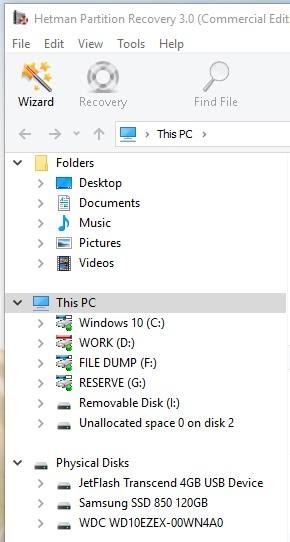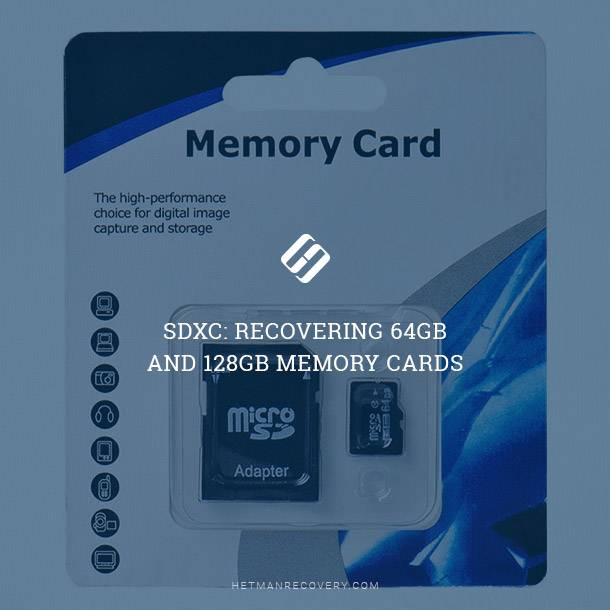Essential Steps for Recovering Data From Unallocated Disk Space
Learn how to recover data from unallocated disk space with our essential guide. Whether you accidentally formatted a disk, encountered partitioning errors, or experienced disk corruption, unallocated disk space can contain valuable data waiting to be retrieved. In this comprehensive tutorial, we’ll walk you through step-by-step instructions and expert techniques to help you successfully recover data from unallocated disk space. From using disk recovery software to manual partition restoration methods, you’ll learn everything you need to know to ensure successful data retrieval. Don’t let unallocated disk space be a barrier to your data recovery—watch our guide and reclaim your lost data today.

- What is unallocated disk space and why it emerges
- How an unallocated disk space looks like
- How to recover files and folders from an unallocated disk area
- How to create a new disk in an unallocated disk space or use it to extend an existing disk
- Questions and answers
- Comments
What is unallocated disk space and why it emerges
Unallocated disk space is the area which is not assigned to a volume or partition. Such area will not be shown as a local disk in your operating system’s File Explorer. However, it’s quite possible that a local disk used to exist in the area of the disk space that is now shown as unallocated.

💽 Nine Common Causes of Partition Loss, and Data Recovery Methods to Use 💽
Such unallocated area in a disk, USB drive or memory card can appear as a result of accidental or unintended user actions, and also because of some circumstances beyond user’s control. These may include:
-
Removing partitions in any disk manager application. For example, Disk Management in Windows, or such programs as Norton Partition Magic, Paragon Partition Manager, Acronis Disk Director Suite, EASEUS Partition Manager, AOMEI Partition Assistant and others.

-
Deleting partitions when reinstalling Windows.
-
Installing another operating system on your computer.
-
Creating a partition which is smaller in capacity than the physical storage device.
-
Increasing or reducing the system partition size.

-
Encountering an error or powering off the computer while working with partitions.
-
Converting the file system.
How an unallocated disk space looks like
Suppose we have a disk containing some files and folders.

As a result of the actions we mentioned above, or due to other circumstances, this disk was deleted and now there is some unallocated area instead of the disk. In Windows Disk Management window, this area is now marked as Unallocated.

When you go to This PC, you can see that such disk is not shown. Which means that the files and other data on such disk are lost.
How to recover files and folders from an unallocated disk area
What should you do if things go wrong? How to recover the lost files? First of all, don’t hurry to create a new volume and format this unallocated space. It can prevent successful data recovery, which we will do later.

In order to restore files from such unallocated area in a disk, USB drive or memory card, install and run Hetman Partition Recovery.

In the left pane, the program will show the list of all available local disks, as well as all physical disks connected to the computer.

In the Disk Management tool, I can see that the unallocated area that I need is located on a disk with the capacity of 3.74 GB.

In the program window, I can see that it is the JetFlash Transcend device. It means that I will recover the lost files from this particular disk.

To do it, click on the disk in the left pane of the program window. By default, the analysis type is Full. Click Next.

Wait until the scanning process is complete. It will take some time, and this time depends on the disk capacity and the speed of its work.
As you can see, Hetman Partition Recovery has found the disk partitions. The one found in the unallocated area had the capacity of 3.74 GB and was named GREEN. Let’s find it on the list of found disks and open it.

As you can see, all lost files and folders are there.

You can use the preview window to see their contents. All you have to do is to click on a file.

To recover the files and folders you need to select them and click the Restore button.

Choose the media.

And the folder for recovery. After that, click Restore again.

Ready. The files have been recovered.
How to create a new disk in an unallocated disk space or use it to extend an existing disk
Now you can create a new volume – a local disk – in this unallocated area. To do it, go to Disk Management, right-click on this unallocated space and select New Simple Volume

And create one following the New Simple Volume Wizard directions.
If you wish, you can also extend one of the volumes in this disk. To do it, right-click on it and select Extend Volume. Then follow the Extend Volume wizard directions.









